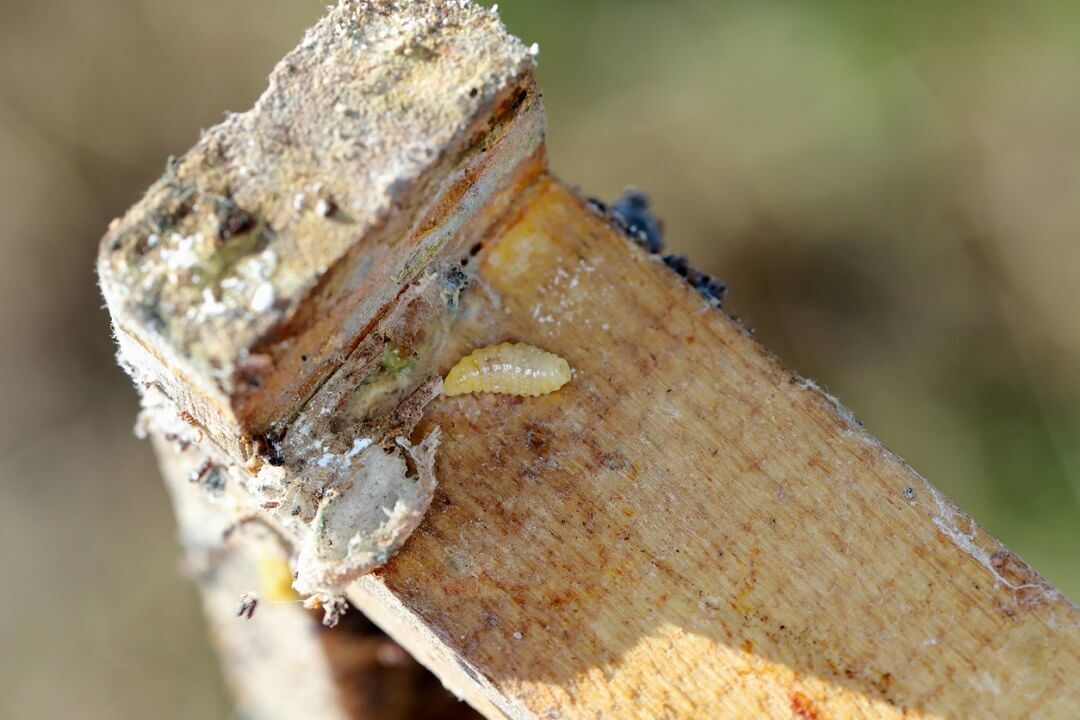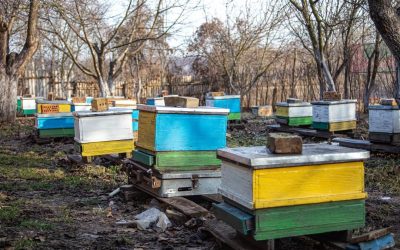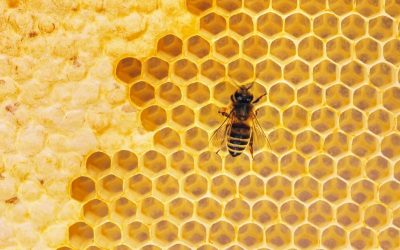Beekeeping is a rewarding and fulfilling hobby that allows you to connect with nature and enjoy the sweet rewards of honey production. However, like any agricultural pursuit, beekeeping comes with its own set of challenges. One such challenge is dealing with wax moths, which can cause damage to your beehive if left unchecked.
In this article, we will explore what wax moths are, how to identify an infestation, prevention methods, treatment options, hive cleaning, and maintenance tips to help you effectively deal with wax moths in your beehive.
What are Wax Moths?
Wax moths (Galleria mellonella and Achroia grisella) are common pests in beehives, particularly in warmer climates. These moths are attracted to the beeswax in your hive, where they lay their eggs. The larvae of wax moths feed on beeswax, pollen, honeycomb, and even dead bees. They can cause significant damage to your hive if their population is not controlled.
Identifying Wax Moth Infestation
It’s essential to be able to recognize the signs of a wax moth infestation in your beehive. Here are some common indicators:
Webbing
Wax moth larvae produce silk webbing that covers the honeycomb and frames. The webbing may look like a thin, white film spread across the surface.
Larvae
The presence of wax moth larvae is a clear sign of an infestation. The larvae are creamy-white in color and have a caterpillar-like appearance. They can be found crawling on the honeycomb, frames, or inside the cells.
Chewed Combs
Wax moth larvae create tunnels and burrows in the honeycomb, causing significant damage to the structure. If you notice chewed or damaged combs, it’s likely that wax moths are present.
Adult Moths
The presence of adult wax moths flying around the hive is an indication of an infestation. However, by the time the adult moths are visible, the damage may already be severe.
Prevention strategies
Preventing wax moth infestations is crucial for maintaining healthy beehives. Here are some preventive measures you can take:
-
- Strong Colonies: Maintaining strong and healthy honeybee colonies is the first line of defense against wax moths. A strong colony of bees can effectively protect the hive and prevent infestations.
- Proper Ventilation: Adequate ventilation in your beehive is essential to create a healthy environment. Proper airflow helps prevent excess moisture buildup, which can attract wax moths. Ensure that your hive has sufficient ventilation holes or screened bottom boards.
- Hive Placement: Choose a well-lit area for your beehives, as wax moths prefer dark and secluded places. Sunlight and natural light can discourage moth activity.
- Regular Hive Inspections: Conduct regular inspections of your beehives to identify any signs of wax moth infestation at an early stage. This allows you to take immediate action before the infestation worsens.
- Removing Old Comb: Wax moths are attracted to old, unused comb. Remove any old comb from your hive and store it properly to prevent infestations.
Treating Wax Moth in Beehive
If you discover a wax moth infestation in your beehive, prompt action is necessary to minimize damage. Here are some treatment options:
Natural Remedies
-
- Freezing: Remove the infested frames or combs from the hive and freeze them for at least 48 hours. Freezing kills the wax moth eggs, larvae, and adult moths.
- Sunlight Exposure: Place the infested frames or combs in direct sunlight for several days. The heat and UV rays from the sun can help kill the wax moth larvae and eggs.
- Moth Traps: Install pheromone-based moth traps inside your beehive. These traps attract and capture adult male wax moths, reducing their ability to mate and reproduce.
- Essential Oils: Certain essential oils, such as thyme, lemongrass, and tea tree oil, have insect-repellent properties. Dilute a few drops of these oils in water and spray the solution on the frames and inside the hive to deter wax moths.
Chemical Treatments
-
- Para Dichlorobenzene (PDB): PDB crystals or mothballs can be used to control wax moth infestations. However, it is important to follow the manufacturer’s instructions and use these chemicals with caution, as they can be toxic to bees if used improperly.
- Bacillus thuringiensis (Bt): Bt is a naturally occurring bacteria that is toxic to certain insect larvae, including wax moth larvae. There are specific strains of Bt formulated for wax moth control. Follow the instructions and apply the product as directed.
It is important to note that when using chemical treatments, it is best to temporarily remove the bees from the hive to minimize their exposure. Ensure proper ventilation and follow all safety precautions to protect yourself and the bees.
Hive Cleaning and Maintenance
Regular hive cleaning and maintenance play a vital role in preventing wax moth infestations. Here are some important steps to follow:
Frame Rotation
Regularly rotate frames within the hive to discourage wax moth activity. By moving frames with brood and honey toward the center of the hive, bees will be more likely to occupy and protect those areas, making them less attractive for wax moths.
Scraping and Repairing
During hive inspections, scrape off any excess wax and propolis from the frames and hive components. Repair or replace damaged comb and frames to eliminate potential hiding places for wax moth eggs.
Freezing or Heating
As a preventive measure, you can periodically freeze frames or combs that are not in use. Alternatively, you can heat them in a solar wax melter or a specialized oven to eliminate any wax moth eggs or larvae that may be present.
Storage
If you have spare frames or comb that are not currently in use, store them properly in airtight containers or sealed plastic bags. This helps prevent wax moth access and infestation while keeping the comb clean and protected.
Hive Hygiene
Maintain good overall hive hygiene by regularly cleaning the bottom board, removing debris, and ensuring proper hive ventilation. A clean and well-maintained hive is less attractive to wax moths.
Monitoring and continued vigilance
Regular monitoring is essential to detect and address wax moth infestations early on. Here are some monitoring methods:
-
- Visual Inspections: Conduct regular visual inspections of your hive, looking for signs of wax moth larvae, webbing, or adult moths. Catching the infestation in its early stages allows for swift action and better control.
- Sticky Traps: Place sticky traps, such as adhesive boards or tapes, inside the hive. These traps can capture adult wax moths and give you an indication of the moth activity level.
- Light Traps: Light traps can be used at night to attract and capture adult moths. This can help reduce the overall population and minimize the chances of a severe infestation.
- Bee Behavior: Observe the behavior of your bees. If you notice increased aggression or a significant decline in foraging activity, it could be a sign of a wax moth infestation. Be vigilant and responsive to any unusual changes in bee behavior.
Conclusion
Dealing with wax moths in your beehive requires a proactive approach that includes prevention, treatment, hive cleaning, and monitoring. By implementing preventive measures, such as maintaining strong colonies, proper ventilation, and regular inspections, you can minimize the risk of wax moth infestations. If an infestation occurs, using natural remedies or chemical treatments can help control the population.
Additionally, maintaining hive hygiene, practicing frame rotation, and monitoring the hive’s condition is crucial for long-term management. By being attentive and proactive, you can protect your beehive from the damaging effects of wax moths and ensure the well-being of your honeybee colony. Happy beekeeping!




